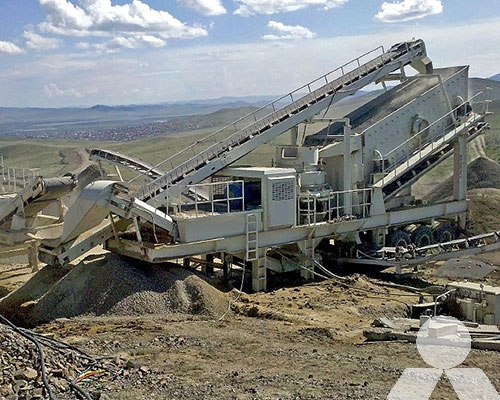Concrete recycling crusher applied in construction concrete recycling processing
Concrete recycling crushers are specialized machines used in the construction industry to process and recycle concrete waste. They play a crucial role in reducing construction waste and promoting sustainable practices. The process of concrete recycling involves crushing the concrete into smaller pieces to produce reusable aggregates. These recycled aggregates can then be used as a substitute for natural aggregates in various construction applications.

Here’s how the concrete recycling process works with the help of a concrete recycling crusher:
- Collection and Transportation: Construction waste concrete is collected from demolition sites, construction projects, or waste disposal facilities and transported to the recycling plant.
- Sorting and Preparing: Upon arrival at the recycling plant, the concrete waste is sorted to remove any contaminants such as wood, metal, or plastic. It is essential to ensure the purity of the recycled aggregates.
- Crushing: The sorted and prepared concrete waste is fed into the concrete recycling crusher. The crusher breaks down the concrete into smaller, manageable pieces. There are various types of crushers used for this purpose, including jaw crushers, impact crushers, cone crushers, or even specialized crushing machines designed specifically for concrete recycling.
- Screening: After the crushing process, the crushed concrete is often screened to separate the different sizes of aggregates. This screening process ensures that the final recycled aggregates meet the required size specifications for their intended applications.
- Aggregate Processing: The crushed and screened recycled concrete aggregates are then processed further to remove impurities and ensure uniformity in size and shape. This step may involve additional washing or air separation techniques.
- Reusing Recycled Aggregates: The processed recycled aggregates are now ready to be reused in various construction projects. They can be used as a replacement for natural aggregates in applications like road base, concrete production, asphalt production, embankments, and more.
Benefits of Concrete Recycling:
- Conservation of Natural Resources: By recycling concrete waste, the demand for natural aggregates is reduced, conserving valuable natural resources like gravel, sand, and crushed stone.
- Waste Reduction: Recycling concrete waste minimizes the amount of construction and demolition waste that ends up in landfills, helping to reduce environmental impact.
- Energy and Cost Savings: The production of recycled aggregates typically requires less energy compared to mining and processing natural aggregates, leading to cost savings.
- Reduced Greenhouse Gas Emissions: Concrete recycling helps in reducing greenhouse gas emissions associated with aggregate extraction and transportation.
Overall, concrete recycling crushers are essential tools for the construction industry’s efforts to adopt sustainable practices, minimize waste, and protect the environment. By embracing concrete recycling, construction companies can make significant strides towards a greener and more responsible approach to building and infrastructure development.









